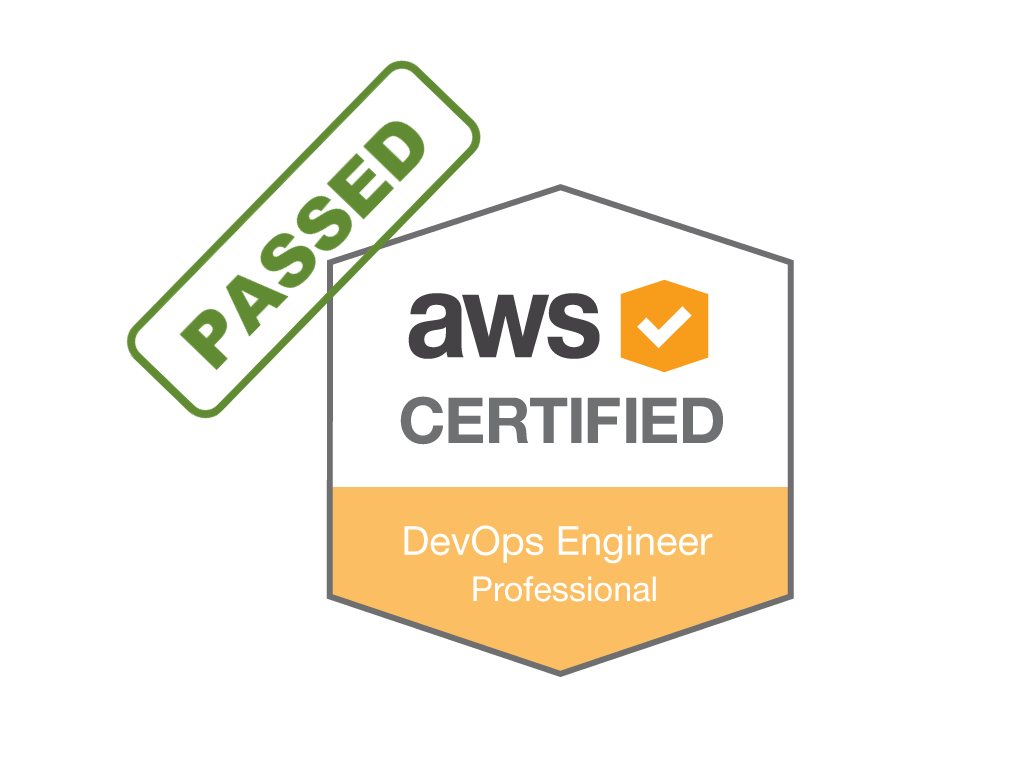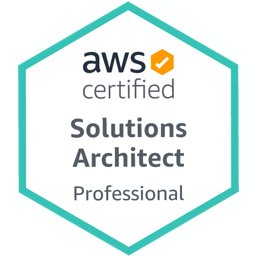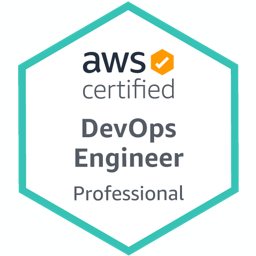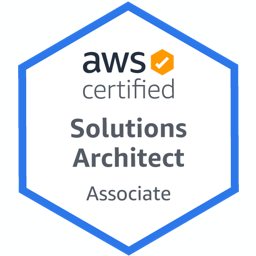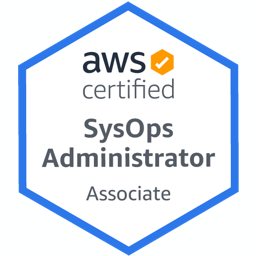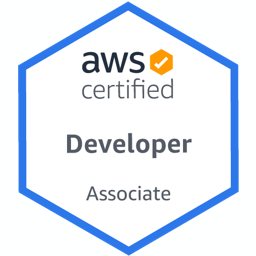When you keep a blog like this, you also keep the logs of important moments in your life, such as passing AWS certification exams. Time really flies! It is hard to believe almost three years have passed since my first Professional-level AWS certification.
Last week, I retook the AWS Certified DevOps Engineer - Professional exam to recertify for three more years and passed with a 943/1000 score. There were newer services in the exam content than the previous version, and online proctoring was also a different experience. Hence, in this post, I will share my experiences with you in case you also plan to take the AWS Certified DevOps Engineer - Professional exam soon.
The exam structure
Let me give you some information about the exam structure if you have not taken a professional-level exam before. The AWS Certified DevOps Engineer - Professional exam is 75 questions with a duration of 180 minutes. If English is not your native language, you can also request an extra 30 minutes as I did. For AWS, it is crucial that you have sufficient time to understand the questions.
There were multi-choice questions where you picked one answer from four choices. Besides, some questions were multiple-response, requiring you to select two or three answers together out of five or six options. But those multiple answers were not alternatives to each other to achieve something on AWS. They were needed to be made together to achieve the expected outcome in the question.
You can flag a question and come back later to review it. As you are not panelized for your wrong answers, it makes sense to answer them even if you are unsure. Besides, you do not have to be sure of the correct answer 100%. Sometimes, other answers have nonsense things, just to confuse you. For example, it may talk about a service to do something, but that service may not offer that feature in any way, not even close. If you know AWS services generally well enough, eliminating those ridiculous options may lead you to the correct answer. However, this again requires sufficient experience on AWS.
The exam content
As I discussed the previous version AWS Certified DevOps Engineer – Professional exam in my Happy to Pass AWS Certified Solutions Architect - Professional and Hold All 5 Core AWS Certifications blog post almost three years ago, there were not many questions about AWS CodePipeline and AWS Lambda back then. That version generally focused on AWS CloudFormation, Elastic Beanstalk, OpsWorks, and EC2 Auto Scaling. However, the new version AWS Certified DevOps Engineer – Professional exam was different this time.
AWS CloudFormation continues to be essential
Again, AWS CloudFormation had its share for infrastructure as code part of the exam. You should know its advanced use cases such as nested stacks and cross-stack references in detail. Of course, I recommend my AWS CloudFormation Step by Step: Intermediate to Advanced course for a detailed explanation and hands-on practices if you need them. Taking AWS CloudFormation Step by Step: Beginner to Intermediate would make more sense if you are new to AWS CloudFormation. Please see them on our courses page.
EC2 Auto Scaling Groups and Application Load Balancers had their shares in the AWS Certified DevOps Engineer - Professional exam, especially in sections related to architecting disaster recovery solutions and deployment automation. If you plan to work as a DevOps Engineer on AWS, you should know these services to implement reliability and scalability anyway. You should also know how to architect database solutions for disaster recovery with Amazon Aurora, RDS and DynamoDB. My previous Why Choose Amazon Aurora Over Regular RDS? blog post may help you grasp the differences between Amazon Aurora and regular Amazon RDS databases.
As in the previous exam version, knowing AWS Elastic Beanstalk will also help you with some questions. You should know its deployment options, as I talked about in my Which AWS Elastic Beanstalk Deployment Method Should You Use? blog post three years ago. But you also need to know its features, the scenarios it is suitable for, to answer some architecting questions confidently, either to select it as the right one or to eliminate it.
AWS CodePipeline is now on the stage
The most striking difference between the two versions for me was the number of questions about AWS CodePipeline, AWS CodeCommit, AWS CodeBuild, and AWS CodeDeploy. As you know, AWS CodePipeline is the CI/CD pipeline service of AWS. You use AWS CodeCommit to store your code, AWS CodeBuild to build it, and AWS CodeDeploy to deploy it to Amazon EC2, Amazon ECS, or AWS Lambda. But AWS Lambda deployment part often involves using AWS CloudFormation and AWS Serverless Application Model (SAM). So, you should know how to create CI/CD pipelines in detail.
I have been using AWS Developer tools for five years, since almost the start of their launch. I also teach AWS CodePipeline on Udemy. So, I had already been ready for the questions about them. But, although my course would help you, you also need to understand deployments to Amazon ECS and AWS Lambda, integrations of these services with third-party applications such as Bitbucket, and GitHub repositories. I plan to add sections for Docker and Amazon ECS in the future.
There were also questions about using AWS Lambda functions with other services, some questions including AWS API Gateway and AWS Step Functions. These services are core serverless tools. So, you should know some serverless as well, to succeed in those questions.
AWS Systems Manager, AWS Config and more
AWS Systems Manager and AWS Config also are essential services in the exam for automation and compliance. AWS Systems Manager became the best-practice service to manage your EC2 instances and on-premises servers on AWS. So this makes sense. Understanding and practicing AWS Systems Manager’s integration with other services mentioned here would also assist you in your AWS Certified DevOps Engineer - Professional exam.
You should know using multiple AWS accounts, AWS Organizations, and cross-account access through IAM to solve security-related questions. In addition, you should understand what AWS GuardDuty, Amazon Inspector, AWS Service Catalog services do well. There is no need to mention Amazon VPC as you must know it to work on AWS. But you may pay attention to VPC-peering, Transit Gateway, Direct Connect to solve questions related to incident management for the network architecture.
Amazon CloudWatch also has an essential share in the AWS Certified DevOps Engineer - Professional exam. You should know how to use its metrics, logs, and events features. You should know how the unified CloudWatch agent works well. We have a lecture on installing it on an EC2 instance to view CodeDeploy logs on my AWS CodePipeline Step by Step course. Hence, I use them a lot. The events part is moving to EventBridge, the new version of CloudWatch events. So, I expect more questions will mention Amazon EventBridge directly instead of Amazon CloudWatch Events in the future. There were already a few questions using the term ‘EventBridge’.
For incident management, exporting logs to S3 or Amazon Elasticsearch (now became Amazon OpenSearch) for further analysis will also be necessary to solve some questions in the AWS Certified DevOps Engineer - Professional exam. You should know what AWS Glue (ETL service), Amazon Athena (S3 query service), QuickSight (for interactive dashboards, graphs) do well. You may see some questions about AWS X-Ray, too. Understanding how these services work independently and together is essential.
My online proctoring experience with Pearson Vue
Unlike my previous exams, I took my AWS Certified DevOps Engineer - Professional exam with online proctoring from Pearson Vue this time. I chose it because Covid is still a problem and I wanted to take an exam from my home office for convenience. Hence, let me share my experiences with them, too.
Before taking the exam, I cleaned my desk and left only my monitor, Macbook, mouse, keyboard, speakers, and of course, webcam. By the way, you can take the exam using an external monitor, but the lid of your laptop must be closed. You should also keep the door of the room closed as well. I also asked my wife not to enter the room until I come back unless there is a matter of life and death, of course, which would be OK to fail the exam.
I signed in to my certification account, connected to Pearson Vue, and started the check-in process 30 minutes before the exam time as explained. It made a standard system check for the microphone, speakers, webcam, and Internet speed. I already did this numerous times the day before. Then, the system provided me a URL to take some pictures for myself, the front, back, left, and right of my desk. After these, I placed my phone in a distant place and a proctor connected. She was polite, but it was sometimes challenging to communicate due to the noise in her background and maybe, her accent. I showed her the room with my webcam, my desk, and the place of my phone. She also wanted to see my wrists as no watches were allowed. Finally, she approved and launched my exam.
I finished the exam early and started reviewing my answers eventually. Then, the application kicked me out for some reason. I had an hour more to finish. It placed me in the queue, and I waited for 10 minutes for another proctor to connect. During this time, I did not leave the webcam view, just waited silently without doing anything. After connecting, the new proctor asked to see my room and desk, the place of my phone again. She applied the same proctor check-in process before the admission to the exam at the start. Then, she launched my exam from the position left. So, please wait patiently if you also encounter this.
I had a positive experience with Pearson Vue overall. Of course, this was related to the point this issue happened. I almost finished the exam. Hence, it was not too stressful for me. But I must say that both proctors were polite and helpful.
Conclusion
AWS certifications expire in three years, and recertification keeps you up-to-date with newer services. It is also a chance to allocate time to reinforce your knowledge.
You need to get a 750 score out of 1000 to pass the AWS Certified DevOps Engineer – Professional exam. However, as a freelance AWS consultant and an AWS instructor, I am happy to have passed it with a high score of 943/1000.
While preparing, I read many whitepapers in the DevOps domain, FAQs, and complete documentation of the essential services. I had already been working with most of them, but I also played with some of the newer ones for me.
Of course, having launched my AWS CodePipeline and my AWS CloudFormation courses also helped me a lot during this process. Actually, I do not focus on certification in these courses. Instead, I aim to make you understand these services well. As you see above, they are both vital for passing the AWS Certified DevOps Engineer – Professional exam. I believe that once you know the services well, you solve any questions with them in more confidence.
Please find the coupon links special to this blog for my AWS CodePipeline and AWS CloudFormation courses on our courses page.
Thanks for reading!
Some Links
- View My AWS Certified DevOps Engineer - Professional certificate on Credly
- Official AWS Certified DevOps Engineer Professional exam page
- My online courses with special discount links
